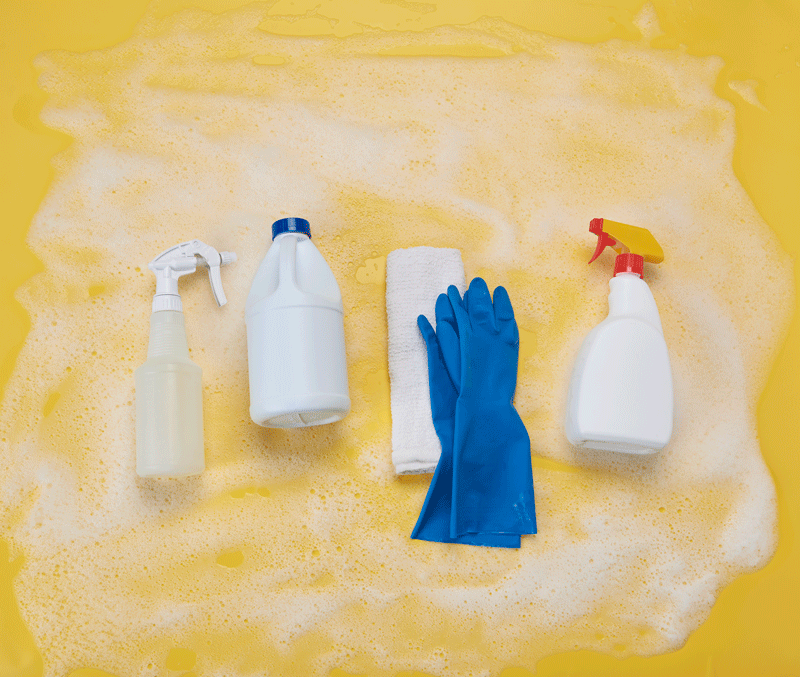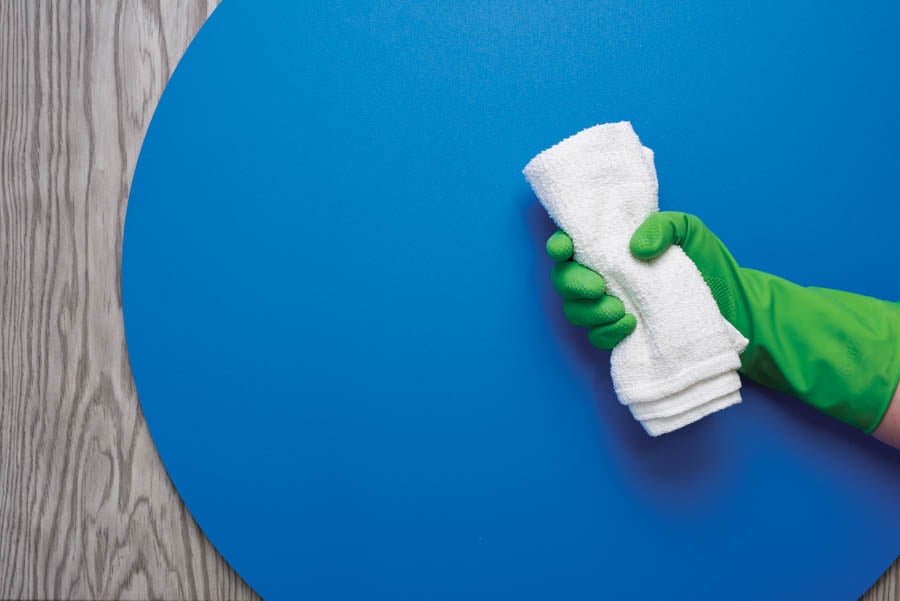
September 16, 2020
Are Antimicrobial Materials and Surfaces Really What We Think?
Various metals and chemical agents have long been touted for their antimicrobial properties, but the effectiveness and safety of the materials are far from certain.

If you wiped down your grocery bags during the pandemic, you have a study from the National Institutes of Health (NIH) to thank. On March 24, when the number of U.S. cases was on its first steep and scary upward climb, researchers led by Dr. Vincent Munster of the NIH’s National Institute of Allergy and Infectious Diseases published a paper that stated that the novel coronavirus survived on plastic and steel surfaces for two to three days.
The commercial interiors industry, however, focused on another finding from the same study—the virus died on copper surfaces in about four hours. If we could get copper or other antimicrobial materials into every surface that people touch, would it keep people safe?
“We have had clients come to us with requests for antimicrobials more in the last couple months,” says Sara Balderi, principal designer at Designtex, a leading manufacturer of textiles and other applied materials. Along with metals such as copper and silver (used in ion form or as nanoparticle treatments), chemical agents like benzo- and methylisothiazolinone have been embraced by specifiers as coatings, finishes, and treatments to fight the spread of bacteria, fungi, and viruses.

Advocates for sustainability and wellness, however, have sounded the alarm. In May, Perkins and Will and the Healthy Building Network reaffirmed the findings of their March 2017 white paper, “Healthy Environments: Understanding Antimicrobial Ingredients in Building Materials,” pointing out that while evidence for the positive effect of antimicrobials remains inconclusive, the disadvantages—chemicals leaching into the environment, microbes developing resistance—are well documented for at least some classes of these compounds. The NIH study reports that the healthiest solution, in any case, is regular cleaning with “household cleaning spray and wipes.”
Then, on May 22, the Centers for Disease Control and Prevention updated its web page on the coronavirus to say that touch “isn’t thought to be the main way the virus spreads,” further raising doubts about whether the benefits of antimicrobials outweigh the risks.
This remains a developing field of study, however, and the pressures of COVID-19 have a way of unsettling established wisdom. At the end of June, Perkins and Will removed the 2017 white paper and associated documents from its website, citing the need to “evaluate newly presented scientific research.”
For now, when Balderi receives a request for antimicrobial treatments, she and her team dig a bit deeper, working to understand the particular problem the specifier might be seeking to solve and pointing out other solutions, like textiles that can stand up to rigorous cleaning and disinfecting: “We share our experience and knowledge and are able to arrive at a solution that almost always does not include the use of antimicrobial additives.”
You may also enjoy “Pratt Students Convert Everyday Waste into Viable Products and Materials”
Would you like to comment on this article? Send your thoughts to: [email protected]
Register here for Metropolis Webinars
Connect with experts and design leaders on the most important conversations of the day.






